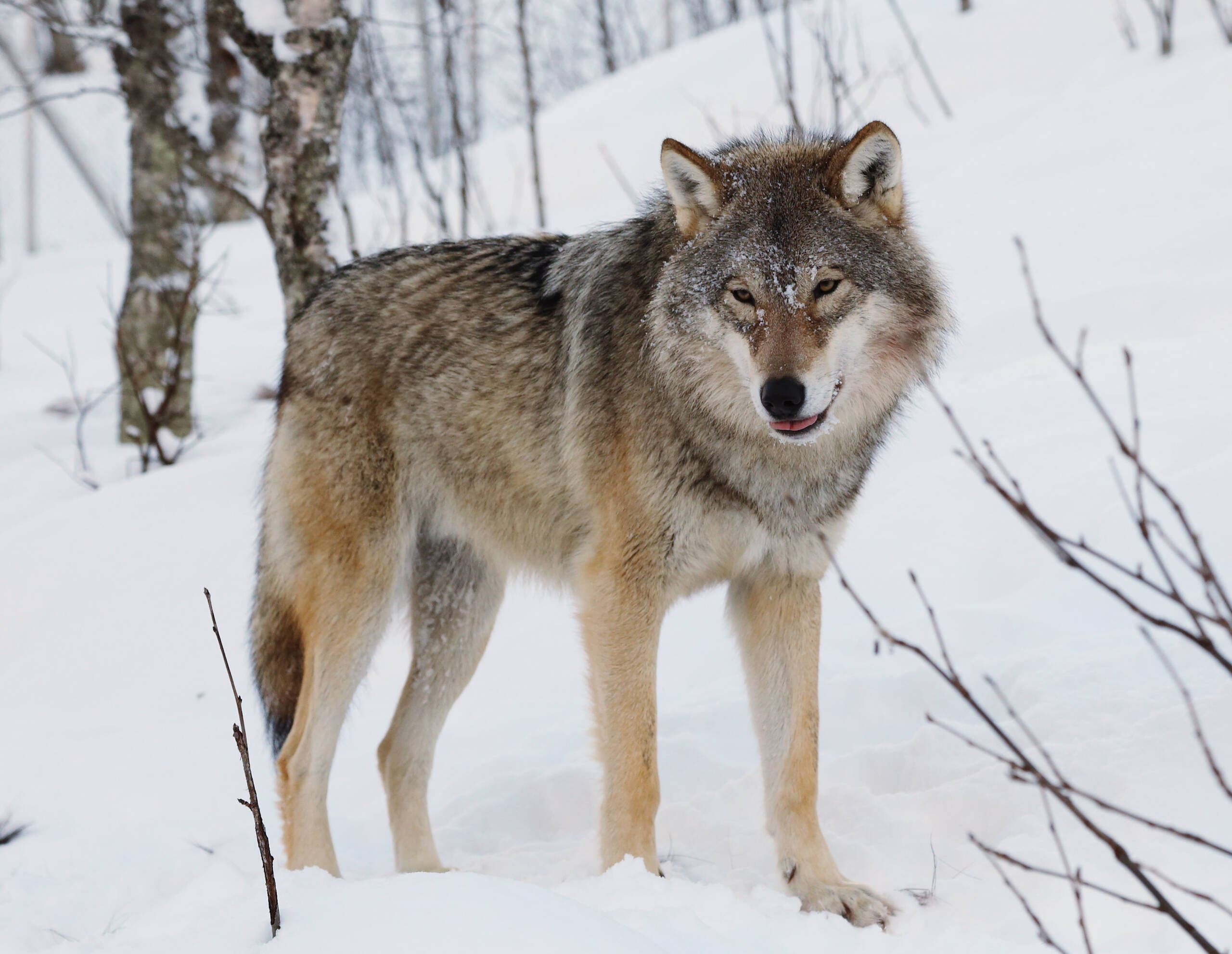History and origin of the Vols
The wolf is one of the most famous and ancient predators on Earth. Their history goes back thousands of years and spans the globe. In ancient times, wolves were strongly associated with mythology and tribal beliefs. In some cultures, they were even considered deities. Today, wolves are found all over the world, but most live in North America, Eurasia, and northern Africa. They usually live in packs of several individuals that band together to better hunt and defend themselves. Wolves are hardy and adaptable animals that can survive in a variety of conditions. They feed on small game such as hares, deer, and roe deer, as well as fish and birds. Wolves can also hunt larger animals such as bison or deer, but they rarely do so. Although wolves have long been hunted and exterminated in many parts of the world, they are still considered one of the most important predators in the world. They help keep wildlife populations in check and play an important role in the ecosystems they inhabit. The wolf is a carnivorous mammal of the canine family. It has tall legs, a powerful muzzle, thick fur and a long tail. Wolfs live in the northern regions of Eurasia and North America, in tundra, forests and mountains. These animals are very social and live in small groups, which can consist of 6-10 individuals. Wolfs are highly intelligent, they can solve complex problems and show empathy for their fellows. Wolves hunt large animals such as elk, deer, roe deer and wild boar, as well as rodents and birds. Wolves play an important role in the ecosystem, controlling the number of prey and maintaining balance in nature. However, due to poaching, destruction of their habitats and conflicts with people, the number of wolves in many regions has decreased to a critical level.
Vols are carnivorous mammals that belong to the canine family. They live in different parts of the world, preferring to live in forests, mountains and steppes.
The most famous species of wolf are the gray wolf, red wolf and arctic wolf. Gray wolves are found in Europe, Asia and North America, red wolves are found in Europe and Asia, and arctic wolves are found in northern Canada, Greenland and Russia.
Vols prefer to live in a variety of environments, including forests, mountains, plains and deserts. They can live both in the wild and near populated areas, adapting to the environment.
Volos are an important part of the ecosystem and help maintain balance in nature. However, due to industrial activity and hunting, some species of Vols are under threat of extinction.
Volos nutrition: what do they eat and how do they hunt?
Wolves are carnivores that feed on a variety of animals. Their diet may include large animals such as elk, deer, and bison, as well as small animals including rabbits, raccoons, and mice. Wolves may also scavenge if hunting opportunities are not available.
Wolves hunt in a pack using their instinct and coordination. They often target weak and sick animals to make their hunt easier. Wolves can run long distances while chasing their prey, and they can reach speeds of up to 40 miles per hour.
Wolves may also use traps, such as snares, to catch their prey. They can also use their scent to deceive their prey and attack it from an unexpected direction.
In addition, wolves may feed on fish, birds and insects, depending on the availability of food in their region.
Overall, wolves are adaptive and efficient predators that can survive in a variety of environments and on a variety of foods.
The social structure of wolf packs varies depending on many factors, including food availability, climatic conditions and the size of the territory in which they live. Typically, a pack consists of a pair of adult wolves, who are the leaders, and their offspring. Wolves live in groups because it increases their chances of survival and hunting success.
The behavior of wolves in packs can also be varied. They can live in harmony with each other, coordinating their actions during hunting and caring for younger members of the pack. However, conflicts sometimes arise between wolves. This can happen when animals fight over access to resources such as food or territory.
Overall, the social structure and behavior of wolf packs is complex and dynamic. To understand them fully, it is necessary to study them in their natural habitat.
Vols and man: conflicts and coexistence
The voles is a large carnivorous mammal of the canine family that lives in North America and Eurasia. Voles play a very important ecological role, helping to control the population of other animals, such as rabbits and coyotes.
However, Vols and people often collide in conflict situations. Wolves can attack livestock, resulting in losses for farmers. They can also be dangerous to people, especially if the animal feels threatened.
At the same time, there are many examples of successful coexistence between wolves and people. For example, in Yellowstone National Park in the USA, wolves were introduced to restore the ecosystem and have since become one of the main attractions of the park. In Russia, wolves have become a tourist attraction in Losiny Ostrov National Park.
There are many programs and studies that help people and wolves live together without conflict. These programs include teaching people how to protect their livestock, using electric fences, and encouraging tourism to conserve wolves and their habitat.
So, the coexistence of wolves and people is possible with the right strategy. Their habitat must be respected and methods that minimize conflict must be used.
The Vols, or Pallas's cat, is a wild cat species that is native to Central Asia and northwest China. These animals can weigh up to 7 kg and have thick, gray fur. Volos are a rare species that face a number of threats, including habitat loss, hunting for their fur, and conflicts with humans.
One of the main ways to help conserve hair is to preserve their habitat. This can be achieved through nature conservation and local resource management. It is also important to conduct educational work with local residents about the meaning of vols and how to interact with them.
Another way to help preserve hair is to support programs that research and protect them. Such programs may include captive breeding, population monitoring, and improving living conditions for volos in the wild.
Overall, the conservation of the walrus depends on us. We need to respect their place in the ecosystem and take measures to protect their lives. The walrus plays an important role in the ecosystem, they are a key predator that regulates small animal populations and controls the spread of diseases. In addition, the walrus is an indicator of ecosystem balance and is important for maintaining biodiversity. The walrus inhabits various climatic zones, including North America, Europe and Asia. They prefer to live in forests and mountainous areas where there is an opportunity to hunt large animals such as deer, horses and bison. The walrus is a unique predator that plays an important role in maintaining biodiversity and ecosystem balance. One of the main problems of the walrus is the decrease in their population as a result of poaching and destruction of their natural habitat. However, there are a number of projects that are aimed at restoring the walrus population.
One such project is 'Wolf Trails'. It was launched in 2002 and is a joint project of the international organization 'World Wildlife Fund' and Russian organizations. The project includes monitoring the wolf population and their migrations, educating local residents about wolves and their importance to the ecosystem.
The results of the 'Wolf Trails' project showed positive dynamics in restoring the wolf population in Russia. According to reports as of 2020, the wolf population increased by 30% within 5 years due to this project.
There are also other projects that are aimed at preserving wolves, for example, 'Wolf in Russia' and 'Eurasian Wolf'. These include monitoring and researching wolf populations, improving their natural habitats, and raising public awareness of the importance of wolf conservation.
In general, projects to restore the volos population show positive results. However, it is necessary to continue work in this direction to preserve this important species and its role in the ecosystem.
Read further:






